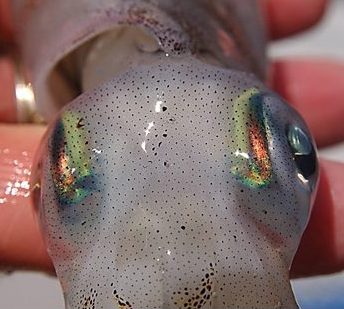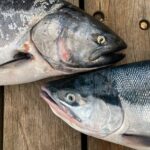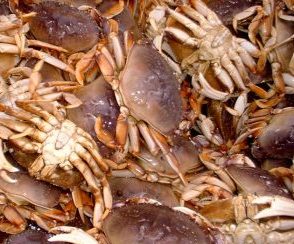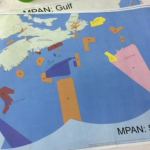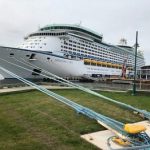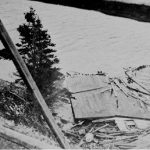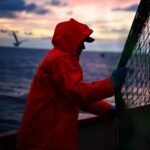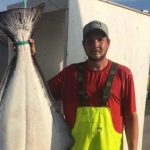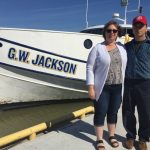Tag Archives: Division of Marine Fisheries.
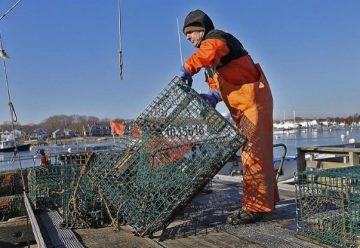
GARFO AA Pentony taking on whale crisis – Lobstermen wary of more environmental regulations
South Shore Lobstermen wary – Traps dropped to the bottom of the ocean by lobstermen are currently connected to a buoy at the surface by a long, taut rope. Fishermen use the buoys to mark where traps are and use the rope to pull up them from the ocean floor, but researchers think the same thing could be achieved by ditching the ropes and using a GPS-like tracking technology and acoustic communication. >click to read< 16:20
Pentony taking on whale crisis – The number one issue right now is the right whale crisis,,, It will occupy our resources and energy for the next several years until we can reverse the trend. Thats going to be a significant challenge. >click to read<
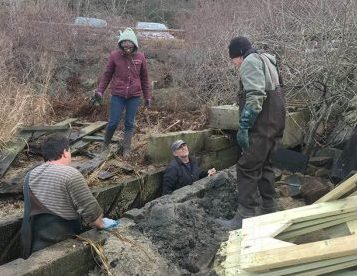
Islanders, officials discuss the dire state of river herring
Local fishermen, tribe and town officials, state and federal officials, and concerned citizens gathered Monday in the cavernous Wampanoag Tribe of Gay Head (Aquinnah) Community Center to discuss the troubling decline in the river herring population on the Vineyard, and along the eastern seaboard.,,, The decimation done by offshore fishing was a recurring theme in the discussion. “Ninety-five percent of the public doesn’t know how much harm the midwater trawlers are doing,” charter fishing captain, and Aquinnah Deputy Shellfish Warden Buddy Vanderhoop said. Vanderhoop said the trawlers off the New England coasts are also decimating groundfish stocks, such as cod, haddock, flounder, and pollock. >click to read< 13:19
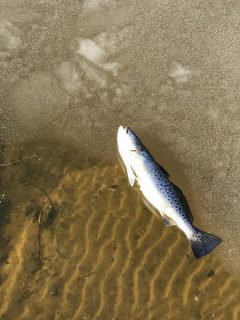
How cold was it in January? Bad enough to kill a lot of fish
The record-breaking freeze that hit eastern North Carolina the first week of January was so cold that it killed a massive number of fish in tidal creeks and estuaries along the coast. Hardest hit was the spotted seatrout, a fish especially popular with recreational anglers who, along with commercial fishermen, are now banned from fishing for them until the middle of June. The moratorium is meant to give surviving fish a chance to replenish by spawning this spring.,,, >click to read< 13:36
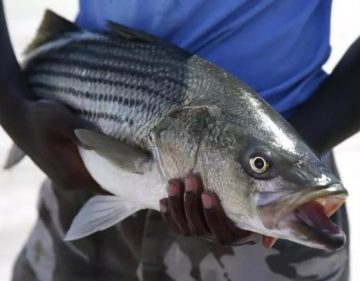
Should Massachusetts ban commercial striped bass fishing?
YES – Rip Cunningham: Dover resident who fishes in the Plymouth area; active member, Stripers Forever; former editor, Salt Water Sportsman; former chairman, Massachusetts Marine Fisheries Advisory Commission, and New England Fisheries Management Council.,, NO – Douglas Amorello: Plymouth resident, commercial lobsterman and multi-species fin fisherman, including for striped bass click here to read the story 15:52
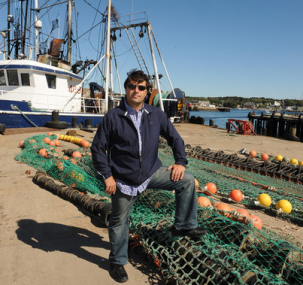
Sanfilippo resigns from Marine Fisheries Advisory Commission
Longtime Gloucester fisherman Gus Sanfilippo has resigned from the state’s Marine Fisheries Advisory Commission, leaving Arthur “Sooky” Sawyer as the only Gloucester resident on the commission. Sanfilippo, appointed to the commission in May 2016 as part of Gov. Charlie Baker’s wholesale purge of existing commission members, said he resigned so he could spend more time fishing.,, Sanfilippo’s resignation leaves Sawyer, who also serves as president of the Massachusetts Lobstermen’s Association, as the solitary Gloucester resident on the commission — though member Louis D. Williams, who resides in Salem, lists Gloucester as his principal port for lobstering. click here to read the story 11:44
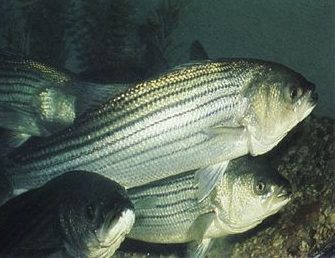
Ban on commercial striper fishing weighed
Stripers were pushed to the brink of extinction in the late-1970s but made a dramatic comeback. Now recreational anglers say the coveted fish again is struggling, and they’re lobbying Beacon Hill to implement new limits that include making the fish off-limits to commercial fishermen. One proposal, filed Rep. Walter Timilty, D-Milton, would limit commercial licenses to fishermen who can demonstrate they’ve caught and sold more than 1,000 pounds of striped bass annually over the last five years. Another proposal, offered by Rep. Thomas Stanley, D-Waltham, would phase out commercial fishing for striped bass by 2025 and establish fines up to $500 per fish for violators of new regulations. click here to read the story 19:29
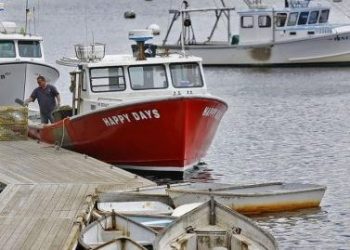
South Shore lobstermen dismayed by failed bid for longer season
Lobstermen are busy loading their boats with traps and buoys and getting their gear back in the water after a three-month closure lifted this week for most of the South Shore. But Marshfield lobsterman John Haviland said he is starting the season feeling more disenchanted than ever after federal regulators turned down a proposal to allow lobstermen to fish year-round with a new rope line designed to reduce the chance of entangling endangered whales. “I’m disappointed that we put three years worth of research and meetings into trying to do the right thing, and it was not successful,” Haviland, president of the South Shore Lobster Fishermen’s Association, said. “It makes you question if you should keep doing the one thing you’ve always done.” Since 2015, federal regulations have banned the use of lobstering equipment from Feb. 1 to April 30 off Cape Cod Bay and beyond, shutting down the local industry for the winter. The goal is to reduce the chances of whales becoming entangled in the gear. click here to read the article 12:09
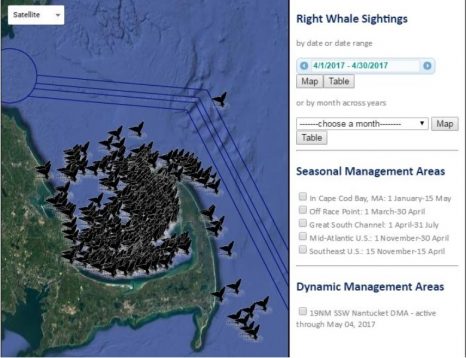
No lobstering until right whales leave Cape Cod Bay
For the past three years there has been a ban on setting lobster traps and pots in the bay from Feb. 1 through the end of April, a ban intended to protect these whales from entanglement. Last week by some counts close to 200 of the estimated total population of 500 Atlantic Western Right Whales were still in Cape Cod Bay. Citing their endangered status and their surprising willingness to stay in the bay because of an abundance of the plankton they feed on, the state’s Division of Marine Fisheries announced that most of the bay would remain closed to setting recreational and commercial lobster traps and pots through next Sunday, May 7. For environmentalists involved in the protection of this species of whale the extended ban was a reasonable, measured action. For many lobstermen it was salt on an open wound. click here to read the story 07:56
Division of Marine Fisheries Extends Trap Fishing Gear Closure in Cape Cod Bay
 As a result of the ongoing presence of endangered right whales feeding in Cape Cod Bay, the Division of Marine Fisheries (DMF) today announced that most of Cape Cod Bay will remain closed to the setting of recreational and commercial traps and pots for an additional week, through May 7, 2017. Right whales are common in Cape Cod Bay during late winter and early spring, especially during the months of March and April, and usually depart before May 1, when the three month (February – April) trap closure affecting this area was scheduled to be lifted. However, over the past month an unprecedented number of whales have been observed, with mid-April counts demonstrating a presence of more than 200 whales. While the most recent survey suggests some whales may have departed the Bay, an estimated 100 to 200 individuals remain present. This late seasonal presence of whales corresponds with extraordinarily high densities of plankton (Calanus copepods), the preferred food of right whales. Read the press release here with imagery 14:43
As a result of the ongoing presence of endangered right whales feeding in Cape Cod Bay, the Division of Marine Fisheries (DMF) today announced that most of Cape Cod Bay will remain closed to the setting of recreational and commercial traps and pots for an additional week, through May 7, 2017. Right whales are common in Cape Cod Bay during late winter and early spring, especially during the months of March and April, and usually depart before May 1, when the three month (February – April) trap closure affecting this area was scheduled to be lifted. However, over the past month an unprecedented number of whales have been observed, with mid-April counts demonstrating a presence of more than 200 whales. While the most recent survey suggests some whales may have departed the Bay, an estimated 100 to 200 individuals remain present. This late seasonal presence of whales corresponds with extraordinarily high densities of plankton (Calanus copepods), the preferred food of right whales. Read the press release here with imagery 14:43
State unreceptive to squid-fishing petition
 David Pierce, director of the state’s Division of Marine Fisheries, started yesterday’s public hearing on whether to bar trawlers from fishing for squid within three miles of Nantucket by listing the reasons he does not support a local petition to keep them away from the island from May 1 to Oct. 31. By the end of the four-hour meeting, attended by an overflow crowd at the Public Safety Facility, Nantucket charter captain and former commercial fisherman Pete Kaizer hoped Pierce had changed his mind on at least one thing: that trawlers disrupt what are called squid mops in a way that kills squid eggs and affects spawning. subscription site, more info to follow as it becomes available. 09:46
David Pierce, director of the state’s Division of Marine Fisheries, started yesterday’s public hearing on whether to bar trawlers from fishing for squid within three miles of Nantucket by listing the reasons he does not support a local petition to keep them away from the island from May 1 to Oct. 31. By the end of the four-hour meeting, attended by an overflow crowd at the Public Safety Facility, Nantucket charter captain and former commercial fisherman Pete Kaizer hoped Pierce had changed his mind on at least one thing: that trawlers disrupt what are called squid mops in a way that kills squid eggs and affects spawning. subscription site, more info to follow as it becomes available. 09:46
Massachusetts fisheries officials: Loophole in striped bass fishery needs closing
 Massachusetts fisheries officials want to to close a loophole in state regulations that resulted in what they believe were illegal landings of striped bass last year. At a public hearing at Massachusetts Maritime Academy Wednesday night, Division of Marine Fisheries Deputy Director Dan McKiernan said the state is looking to reduce the number of striped bass that commercial fishermen could land from 15 down to two, if they’re fishing from shore. “What happened last year was disgusting,” said Patrick Paquette of the Massachusetts Striped Bass Association, which is composed of both commercial and recreational fishermen. “There was a rampant black market at the (Cape Cod) canal. Plenty of guys were taking fish from friends, putting them in coolers, and selling them under their boat permit.” Under state striped bass fishing regulations, a commercial fisherman can buy a boat permit that allows him or her to catch and sell up to 15 fish a day. There is also a less expensive individual permit under which he or she can land two fish a day from shore. The state limited commercial fishing to two days a week. In bad weather, some fishermen with boat permits fished from shore, and could technically land their 15 fish. Read the story here 09:37
Massachusetts fisheries officials want to to close a loophole in state regulations that resulted in what they believe were illegal landings of striped bass last year. At a public hearing at Massachusetts Maritime Academy Wednesday night, Division of Marine Fisheries Deputy Director Dan McKiernan said the state is looking to reduce the number of striped bass that commercial fishermen could land from 15 down to two, if they’re fishing from shore. “What happened last year was disgusting,” said Patrick Paquette of the Massachusetts Striped Bass Association, which is composed of both commercial and recreational fishermen. “There was a rampant black market at the (Cape Cod) canal. Plenty of guys were taking fish from friends, putting them in coolers, and selling them under their boat permit.” Under state striped bass fishing regulations, a commercial fisherman can buy a boat permit that allows him or her to catch and sell up to 15 fish a day. There is also a less expensive individual permit under which he or she can land two fish a day from shore. The state limited commercial fishing to two days a week. In bad weather, some fishermen with boat permits fished from shore, and could technically land their 15 fish. Read the story here 09:37

Mass DMF gets an earful from conch fishermen, David Pierce mentions squid trawling
Officials from the Division of Marine Fisheries on their annual rounds to inform fishermen of proposed regulations for 2017 held a public hearing at the Katharine Cornell Theater in Tisbury on Wednesday morning. A lengthy agenda cast a wide net on changes in proposed limits to finfish and shellfish, but the most spirited debate by far was over a proposed increase to the minimum size of channel whelk and knob whelk, often referred to as “conch,” for this year. DMF director David Pierce and deputy director Dan McKiernan moderated the discussion. Local fishermen portended dire economic circumstances if the current minimum size, measured at the shell’s widest point, is increased from 3 inches to 3 3⁄16 inches. DMF officials countered that without the increase, the future of the conch fishery, the most valuable fishery on Martha’s Vineyard, will be in serious jeopardy in a matter of years. Prior to the start of the public hearing, DMF director David Pierce said that while on vacation on Martha’s Vineyard last year, he picked up a copy of The MV Times and read the Sept. 7 story, “Squid trawlers leave a wake of death south of Martha’s Vineyard” that described the miles of dead by-catch — mostly squid and scup — left behind by squid trawlers operating just outside the three-mile state limit south of Martha’s Vineyard. Read the story here 17:04

North Carolina: Small Victory for Trawling Industry – But the fight isn’t over
Around 20 trawl boats made their way up the Neuse River to anchor in front of the New Bern Convention Center on Tuesday in a show of protest to proposed rules that would severely impact and ultimately kill their industry. Inside, the spacious conference room was filled to capacity with mostly advocates and supporters of commercial fishing. Donning badges saying “Deny the petition” with a trawl boat on the back drop, the show of solidarity was palpable.,, Throughout the meeting, advisory members unraveled what could be determined as a poorly thought-out petition, pointing out large factors that were omitted – namely economics and science. One of the biggest flaws the panel pointed out repeatedly is the fact that no other environmental factors were considered in the NCWF’s accusation that trawlers were destroying the finfish population. From cormorants to construction and economics to foreign imports, there were many elements the NCWF admittedly left out. It was very clear that the group had one purpose with their proposed petition for rule-making- to shut down trawling in NC waters. Read the story here 11:36
Questions arise over commercial license fees collected for flounder fishery observers
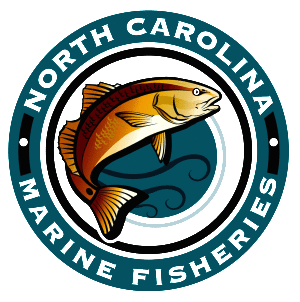 Watermen want to know what happened to commercial license fees that were collected to fund observers required by law for flounder fishing when sea turtles are spotted in area waters. Few answers were provided at a meeting of the North Carolina Commercial Fishing Resource Funding Committee on Jan. 4. Records show that $1.3 million was allocated for the observers in the 2015-2016 fiscal year, but only $608,065 was spent. Dewey Hemilright, who attended the meeting, asked how so much could have been spent on the Section 10 permit program when the flounder fishery was closed much of the season. “Expenses need more accountability,” said Hemilright, a long-line fisherman. “This doesn’t affect me, but I’m willing to pay the extra money if it allows others to fish. But if there’s more being paid in than is needed, then it should be returned to the fishermen.” An additional license fee was imposed after a state appropriation to cover the cost of complying with the federal permit’s conditions was eliminated. One condition requires the observers, who monitor interactions with endangered sea turtles and sturgeon. Read the rest here 15:53
Watermen want to know what happened to commercial license fees that were collected to fund observers required by law for flounder fishing when sea turtles are spotted in area waters. Few answers were provided at a meeting of the North Carolina Commercial Fishing Resource Funding Committee on Jan. 4. Records show that $1.3 million was allocated for the observers in the 2015-2016 fiscal year, but only $608,065 was spent. Dewey Hemilright, who attended the meeting, asked how so much could have been spent on the Section 10 permit program when the flounder fishery was closed much of the season. “Expenses need more accountability,” said Hemilright, a long-line fisherman. “This doesn’t affect me, but I’m willing to pay the extra money if it allows others to fish. But if there’s more being paid in than is needed, then it should be returned to the fishermen.” An additional license fee was imposed after a state appropriation to cover the cost of complying with the federal permit’s conditions was eliminated. One condition requires the observers, who monitor interactions with endangered sea turtles and sturgeon. Read the rest here 15:53
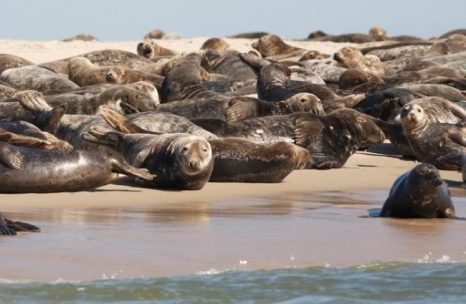
Cape Cod: Summing up the seals
When David Pierce seated himself at the table at the Nantucket Seal Symposium last month, one image came to mind: private pilot Aaron Knight’s video from last April showing miles of gray seals – a dozen deep, cheek by jowl, banding the Monomoy shoreline. Recently appointed as director of the state Division of Marine Fisheries, Pierce is a veteran of decades of fisheries negotiations as former director Paul Diodati’s proxy on the New England Fishery Management Council. Fishery managers live and die by population estimates, known as stock assessments, that help set sustainable catch levels for commercial fishermen, so it was disconcerting to hear that the same level of science had not been applied to the predators who eat them. “The determination of population size is extremely important, especially in the context of ecosystem management in New England,” Pierce said. “If they (gray seals) are out there in large numbers foraging, what might their impact be on the Georges Bank ecosystem?” The answer will not be coming any time soon, according to federal fisheries officials at the symposium. Read the story here 09:43
FOR IMMEDIATE RELEASE: Division of Marine Fisheries Reopens Waters South of Cape Cod to Shellfishing
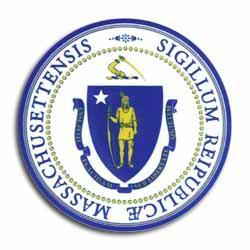 Effective immediately, the Division of Marine Fisheries (DMF) has reopened waters south of Cape Cod to shellfish harvesting, including Mount Hope Bay, Buzzards Bay, Vineyard Sound, Nantucket Sound, the islands of Martha’s Vineyard and Nantucket, and the south coast of Cape Cod. Due to the dissipation of a potentially toxic phytoplankton bloom of Pseudo-Nitzshia and the results of toxicity testing, DMF has concluded that shellfish in the reopened areas are safe to harvest for public consumption.Toxicity screening of shellfish was conducted by DMF laboratories and the Bigelow Laboratory for Ocean Sciences in Maine, and results have determined that digging, harvesting, collecting and/or attempting to dig, harvest or collect shellfish, and the possession of shellfish, is now permissible in all approved or conditionally approved waters from the Rhode Island border east into Nantucket Sound, including all of Vineyard and Nantucket Sounds and waters surrounding the islands. DMF issued a shellfish harvest closure in Buzzards Bay, Mount Hope Bay and Lackeys Bay on October 7, 2016 and issued a closure in all waters south of Cape Cod on October 9, 2016. Shellfish closure notices can be found on the DMF website. 12:54
Effective immediately, the Division of Marine Fisheries (DMF) has reopened waters south of Cape Cod to shellfish harvesting, including Mount Hope Bay, Buzzards Bay, Vineyard Sound, Nantucket Sound, the islands of Martha’s Vineyard and Nantucket, and the south coast of Cape Cod. Due to the dissipation of a potentially toxic phytoplankton bloom of Pseudo-Nitzshia and the results of toxicity testing, DMF has concluded that shellfish in the reopened areas are safe to harvest for public consumption.Toxicity screening of shellfish was conducted by DMF laboratories and the Bigelow Laboratory for Ocean Sciences in Maine, and results have determined that digging, harvesting, collecting and/or attempting to dig, harvest or collect shellfish, and the possession of shellfish, is now permissible in all approved or conditionally approved waters from the Rhode Island border east into Nantucket Sound, including all of Vineyard and Nantucket Sounds and waters surrounding the islands. DMF issued a shellfish harvest closure in Buzzards Bay, Mount Hope Bay and Lackeys Bay on October 7, 2016 and issued a closure in all waters south of Cape Cod on October 9, 2016. Shellfish closure notices can be found on the DMF website. 12:54
Judge blocks closure of southern flounder fishing. Will it be appealed?
A Wake County Superior Court judge has issued an injunction preventing the  N.C. Marine Fisheries Commission from closing the entire southern flounder fishery from October 16 through January 1. During its November 2015 meeting at Jeanette’s Pier, the commission voted 6-3 to shut down both the commercial and recreational fisheries for southern flounder during the fourth quarter of 2016. A lawsuit was filed by the New Bern-based North Carolina Fisheries Association, the Carteret County Fishermen’s Association, as well as Dare, Hyde and Carteret counties, against the commission’s action, and resulted in a temporary restraining order being issued on Sept. 28. After two hours of testimony on Oct. 6 from attorneys representing the NCFA and the state, Superior Court Judge John Jolly, Jr. issued an order preventing the Division of Marine Fisheries from instituting the October 16 closure. When the MFC voted for the closure last year, interest groups from the commercial fishing industry, which were opposed to the ban, lined up against the recreation-oriented Coastal Conservation Association and Recreational Fishing Alliance. Read the story here 09:39
N.C. Marine Fisheries Commission from closing the entire southern flounder fishery from October 16 through January 1. During its November 2015 meeting at Jeanette’s Pier, the commission voted 6-3 to shut down both the commercial and recreational fisheries for southern flounder during the fourth quarter of 2016. A lawsuit was filed by the New Bern-based North Carolina Fisheries Association, the Carteret County Fishermen’s Association, as well as Dare, Hyde and Carteret counties, against the commission’s action, and resulted in a temporary restraining order being issued on Sept. 28. After two hours of testimony on Oct. 6 from attorneys representing the NCFA and the state, Superior Court Judge John Jolly, Jr. issued an order preventing the Division of Marine Fisheries from instituting the October 16 closure. When the MFC voted for the closure last year, interest groups from the commercial fishing industry, which were opposed to the ban, lined up against the recreation-oriented Coastal Conservation Association and Recreational Fishing Alliance. Read the story here 09:39
Northern Gulf of Maine State Waters Exempted Scallop Fishery Meeting Scheduled
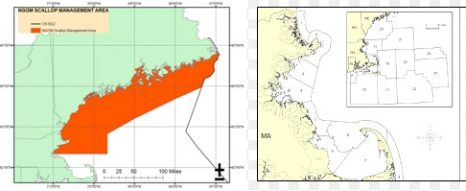 The Division of Marine Fisheries (DMF) will take public comment on a possible state waters exempted scallop fishery in the Northern Gulf of Maine (NGOM) scallop management area. A meeting is scheduled for: 5PM – 7PM Thursday, October 20, 2016 Annisquam River Marine Fisheries Station 30 Emerson Ave., Gloucester, MA. DMF was petitioned to apply for a state waters exempted fishery in the NGOM scallop management area (Figure 1). The petition requests an allowance for both Limited Access General Category – Northern Gulf of Maine (LAGC-NGOM) and Limited Access General Category – Individual Fishing Quota (LAGC-IFQ) permit holders to continue fishing for scallops in the MA state waters portion of the NGOM after the NGOM TAC is harvested. Federal regulations allow that “(a) state may be eligible for a state waters exemption if it has a scallop fishery and a scallop conservation program that does not jeopardize the biomass and fishing mortality/effort limit objectives of the Scallop FMP” (50 CFR §648.54(a). The Commonwealth’s primary scalloping grounds exist in Cape Cod Bay and along the backside of the Cape. A secondary state waters scallop fishery is conducted in Ipswich Bay, which is included in the NGOM scallop management area. DMF Statistical Areas 1-4 equate to the Massachusetts state waters portion of the NGOM (Figure 2). DMF will consider all comments (written comments must be received by 5PM on Friday, October 21st) in making a final decision whether or not to submit a request for a NGOM state waters exempted scallop fishery for the 2017 fishing year. NMFS has final approval of any request made. 12:26
The Division of Marine Fisheries (DMF) will take public comment on a possible state waters exempted scallop fishery in the Northern Gulf of Maine (NGOM) scallop management area. A meeting is scheduled for: 5PM – 7PM Thursday, October 20, 2016 Annisquam River Marine Fisheries Station 30 Emerson Ave., Gloucester, MA. DMF was petitioned to apply for a state waters exempted fishery in the NGOM scallop management area (Figure 1). The petition requests an allowance for both Limited Access General Category – Northern Gulf of Maine (LAGC-NGOM) and Limited Access General Category – Individual Fishing Quota (LAGC-IFQ) permit holders to continue fishing for scallops in the MA state waters portion of the NGOM after the NGOM TAC is harvested. Federal regulations allow that “(a) state may be eligible for a state waters exemption if it has a scallop fishery and a scallop conservation program that does not jeopardize the biomass and fishing mortality/effort limit objectives of the Scallop FMP” (50 CFR §648.54(a). The Commonwealth’s primary scalloping grounds exist in Cape Cod Bay and along the backside of the Cape. A secondary state waters scallop fishery is conducted in Ipswich Bay, which is included in the NGOM scallop management area. DMF Statistical Areas 1-4 equate to the Massachusetts state waters portion of the NGOM (Figure 2). DMF will consider all comments (written comments must be received by 5PM on Friday, October 21st) in making a final decision whether or not to submit a request for a NGOM state waters exempted scallop fishery for the 2017 fishing year. NMFS has final approval of any request made. 12:26
At one time, they were close collaborators. Great White Shark researchers spar over studies off Cape Cod
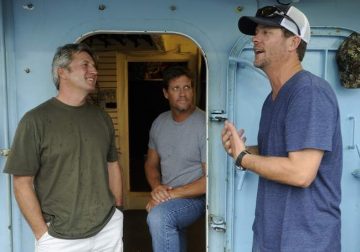 In 2012, OCEARCH operated under state Division of Marine Fisheries shark scientist Gregory Skomal’s federal permit to catch and tag great white sharks off Chatham. The next year, with Skomal again on board, the state allowed the big Alaskan crab boat the organization uses into state waters, less than 3 miles offshore. This June, citing concerns that any additional research on great white sharks within state waters could jeopardize a five-year population study led by Skomal, Division of Marine Fisheries Director David Pierce denied OCEARCH’s application for a research permit to catch great whites off Monomoy. “I’m concerned your proposed work would compromise our research by jeopardizing our study’s validity,” Pierce wrote to OCEARCH president Christopher Fischer in his June 30 letter denying the permit for state waters. In January, OCEARCH received a federal research permit from the National Oceanic and Atmospheric Administration’s highly migratory species program to capture and tag a total of 75 sharks of varying species, including eight great whites, anywhere from the Gulf of Mexico all the way up the Atlantic coast. Read the story here 14:16
In 2012, OCEARCH operated under state Division of Marine Fisheries shark scientist Gregory Skomal’s federal permit to catch and tag great white sharks off Chatham. The next year, with Skomal again on board, the state allowed the big Alaskan crab boat the organization uses into state waters, less than 3 miles offshore. This June, citing concerns that any additional research on great white sharks within state waters could jeopardize a five-year population study led by Skomal, Division of Marine Fisheries Director David Pierce denied OCEARCH’s application for a research permit to catch great whites off Monomoy. “I’m concerned your proposed work would compromise our research by jeopardizing our study’s validity,” Pierce wrote to OCEARCH president Christopher Fischer in his June 30 letter denying the permit for state waters. In January, OCEARCH received a federal research permit from the National Oceanic and Atmospheric Administration’s highly migratory species program to capture and tag a total of 75 sharks of varying species, including eight great whites, anywhere from the Gulf of Mexico all the way up the Atlantic coast. Read the story here 14:16
Counting cod: Division of Marine Fisheries trawl survey aims to determine status of iconic fish
 The coastline had melted into a gray slurry, its shapes barely visible through intermittent rain and mist, when the Miss Emily made her first of two scheduled tows last week about seven miles off this South Shore port. Despite the weather, the waters remained sedate as the 55-foot gillnetter (its a dragger), skippered by owner Capt. Kevin Norton, steamed at about three knots for 30 minutes, its net set at 36 fathoms, or about 216 feet. Its target? What else? The iconic, oft-debated and oft-elusive cod. “It will be interesting to see what we come up with today,” Norton said as he feathered the Miss Emily through the harbor and out into open waters. “Usually, at this time of year, there’s nothing really here because the water has begun to warm and the fish already have moved further out.” “This whole survey is designed with cod in mind,” said Micah Dean, a research scientist at DMF. “There’s never been a fishing-industry trawl survey in June or July, so this should give us a new perspective.” Read the rest here 09:03
The coastline had melted into a gray slurry, its shapes barely visible through intermittent rain and mist, when the Miss Emily made her first of two scheduled tows last week about seven miles off this South Shore port. Despite the weather, the waters remained sedate as the 55-foot gillnetter (its a dragger), skippered by owner Capt. Kevin Norton, steamed at about three knots for 30 minutes, its net set at 36 fathoms, or about 216 feet. Its target? What else? The iconic, oft-debated and oft-elusive cod. “It will be interesting to see what we come up with today,” Norton said as he feathered the Miss Emily through the harbor and out into open waters. “Usually, at this time of year, there’s nothing really here because the water has begun to warm and the fish already have moved further out.” “This whole survey is designed with cod in mind,” said Micah Dean, a research scientist at DMF. “There’s never been a fishing-industry trawl survey in June or July, so this should give us a new perspective.” Read the rest here 09:03
Federal ocean planning effort met with skepticism in New Bedford
 No commercial fishermen attended a Wednesday meeting about a new ocean planning initiative, and a local port leader warned that mistrust of the government — widespread on the waterfront — could be spurring skepticism about the federal effort to gather and utilize public input. State and federal officials including Betsy Nicholson of the National Oceanic and Atmospheric Administration (NOAA) led the event, which drew about 20 people to a third-floor room in New Bedford’s downtown library. The intent was to hear public comment on the draft Northeast Regional Ocean Plan. The plan culminates a four-year effort to compile input from numerous marine industries, environmental groups, public and private officials, tribal entities and others, across all six New England states, for a document that could guide future ocean planning. Read the rest here 18:19
No commercial fishermen attended a Wednesday meeting about a new ocean planning initiative, and a local port leader warned that mistrust of the government — widespread on the waterfront — could be spurring skepticism about the federal effort to gather and utilize public input. State and federal officials including Betsy Nicholson of the National Oceanic and Atmospheric Administration (NOAA) led the event, which drew about 20 people to a third-floor room in New Bedford’s downtown library. The intent was to hear public comment on the draft Northeast Regional Ocean Plan. The plan culminates a four-year effort to compile input from numerous marine industries, environmental groups, public and private officials, tribal entities and others, across all six New England states, for a document that could guide future ocean planning. Read the rest here 18:19
Division of Coastal Management director now Division of Marine Fisheries director as well
 State environmental department Secretary Dr. Donald van der Vaart today named , director of the state Division of Coastal Management, to lead the state’s Division of Marine Fisheries effective immediately. For the immediate future, the divisions will remain separate entities housed under the state’s environmental agency, and Mr. Davis will lead both divisions as director. The department intends to examine ways in which the two divisions can achieve efficiencies in operations. Braxton’s knowledge of state and national coastal issues, and his experience as director of our coastal management division, made him the perfect choice to lead both groups,” said Dr. van der Vaart. Read the rest here 14:03
State environmental department Secretary Dr. Donald van der Vaart today named , director of the state Division of Coastal Management, to lead the state’s Division of Marine Fisheries effective immediately. For the immediate future, the divisions will remain separate entities housed under the state’s environmental agency, and Mr. Davis will lead both divisions as director. The department intends to examine ways in which the two divisions can achieve efficiencies in operations. Braxton’s knowledge of state and national coastal issues, and his experience as director of our coastal management division, made him the perfect choice to lead both groups,” said Dr. van der Vaart. Read the rest here 14:03
The Governor needs to fix the dysfunction at the Division of Marine Fisheries
 We (Beaufort Observer) have reported a number of articles on the N. C. Division of Marine Fisheries (DMF). Our focus has been mostly on the inadequacy of the “science” DMF and its Marine Fisheries Commission (MFC) use to regulate the fisheries industry in North Carolina. However, in the course of researching these articles we have learned a great deal about how the DMF operates. It is another classic tale of a bloated bureaucracy that has become entangled in . We’ll save the details for later articles we are still working on, but what we have seen in DMF has been a perfect example of “mission creep” and a “solution looking for a problem to solve.” Read the rest here 10:51
We (Beaufort Observer) have reported a number of articles on the N. C. Division of Marine Fisheries (DMF). Our focus has been mostly on the inadequacy of the “science” DMF and its Marine Fisheries Commission (MFC) use to regulate the fisheries industry in North Carolina. However, in the course of researching these articles we have learned a great deal about how the DMF operates. It is another classic tale of a bloated bureaucracy that has become entangled in . We’ll save the details for later articles we are still working on, but what we have seen in DMF has been a perfect example of “mission creep” and a “solution looking for a problem to solve.” Read the rest here 10:51
Trawl Modifications to keep fish out of N.C. shrimp nets prove surprisingly effective
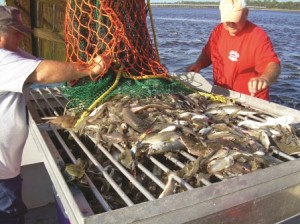 Shrimpers and biologists surprised the experts last summer by using modified trawl nets that drastically reduced the amount of popular fish caught and discarded. The nets were fitted with a variety of devices beyond what is already required, including “spooker cones” that scare away fish before they enter the net, additional escape openings called fisheyes, and tailbags with larger mesh. The tailbag is where the catch collects at the end of the net. Biologists and fishermen were amazed how effective the test devices were, said with the Division of Marine Fisheries. Read the article here 16:49
Shrimpers and biologists surprised the experts last summer by using modified trawl nets that drastically reduced the amount of popular fish caught and discarded. The nets were fitted with a variety of devices beyond what is already required, including “spooker cones” that scare away fish before they enter the net, additional escape openings called fisheyes, and tailbags with larger mesh. The tailbag is where the catch collects at the end of the net. Biologists and fishermen were amazed how effective the test devices were, said with the Division of Marine Fisheries. Read the article here 16:49
Quincy legislator Ayers pushes fish farm proposal
Four granite sewage storage tanks built more than a century ago have sat unused on Moon Island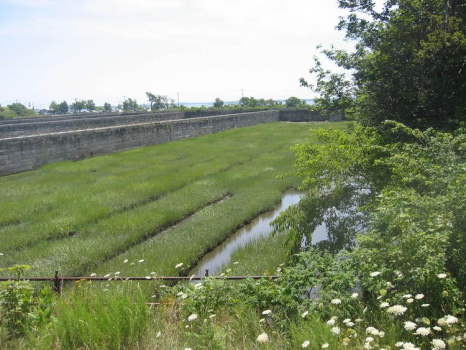 for decades, since Boston built a treatment plant on Deer Island in the 1960s. They can each hold 50 million gallons of water and open directly onto Boston Harbor. Now, state Rep. Bruce Ayers, a Quincy Democrat, wants to see the state look into using the former vats as fish and shellfish farms – a suggestion Ayers said came from Squantum residents John Coughlin and Richard Donahue. Ayers recently met with officials from the state Department of Fish & Game and the Division of Marine Fisheries to discuss legislation he sponsored that would ask the state Department of Fish & Game to study the feasibility of such a project. Read the article here 09:23
for decades, since Boston built a treatment plant on Deer Island in the 1960s. They can each hold 50 million gallons of water and open directly onto Boston Harbor. Now, state Rep. Bruce Ayers, a Quincy Democrat, wants to see the state look into using the former vats as fish and shellfish farms – a suggestion Ayers said came from Squantum residents John Coughlin and Richard Donahue. Ayers recently met with officials from the state Department of Fish & Game and the Division of Marine Fisheries to discuss legislation he sponsored that would ask the state Department of Fish & Game to study the feasibility of such a project. Read the article here 09:23
Net Effect: The fight over flounder
David Sneed is executive director of the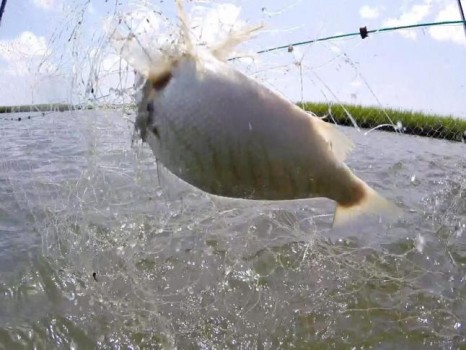 , the main group representing recreational fishermen. He says commercial fishermen have blocked attempts to reduce the use of gill nets. “The science has been there to say, ‘Hey, we need to pull back on this. We’re over-harvesting these fish,’ but the push has always been there to say, ‘No, we need to catch more fish, you know, we need to be able to make money off of this resource.’” But Jerry Schill, executive director of the NC Fisheries Association, the main group representing commercial fishermen, says the flounder fishery is not being overharvested. Read the rest here 09:19
, the main group representing recreational fishermen. He says commercial fishermen have blocked attempts to reduce the use of gill nets. “The science has been there to say, ‘Hey, we need to pull back on this. We’re over-harvesting these fish,’ but the push has always been there to say, ‘No, we need to catch more fish, you know, we need to be able to make money off of this resource.’” But Jerry Schill, executive director of the NC Fisheries Association, the main group representing commercial fishermen, says the flounder fishery is not being overharvested. Read the rest here 09:19
State DMR rejects the so-called “Gloucester Plan” for more inclusive fishery aid plan
 The full grant of $6.9 million contained in the third phase, or Bin 3, of federal funding being funneled through the state is the final installment of the roughly $21 million in federal fishery disaster funds designated for Massachusetts from the $75 million appropriated by Congress in January 2014. The final plan excludes permit banks from receiving the . Gronendyke said the state will use about $200,000 of the $6.9 million “to partner with industry in developing a viable industry-funded buyback program” with the bulk of the remaining $6.7 being distributed to the fishermen in direct aid. Read the rest here 07:41
The full grant of $6.9 million contained in the third phase, or Bin 3, of federal funding being funneled through the state is the final installment of the roughly $21 million in federal fishery disaster funds designated for Massachusetts from the $75 million appropriated by Congress in January 2014. The final plan excludes permit banks from receiving the . Gronendyke said the state will use about $200,000 of the $6.9 million “to partner with industry in developing a viable industry-funded buyback program” with the bulk of the remaining $6.7 being distributed to the fishermen in direct aid. Read the rest here 07:41
Warring plans delay awarding of fish aid – State to deliver a proposal to NOAA by Oct. 1
 The consensus toward developing a plan to distribute the approximately $6 million remaining in federal groundfish disaster aid seems to have degenerated into a contentious melee and now local stakeholders anxiously await the decision by the state Division of Marine Fisheries on which will qualify for assistance. The process for formulating a distribution plan turned ugly at a two-hour Friday afternoon meeting in New Bedford, according to several people who participated, with different Bay State fishing regions — and fishermen of different species — pitted against each other in their respective efforts to influence DMF’s final spending plan. The meeting had been expected to end with a decision,,, Read the rest here 11:19
The consensus toward developing a plan to distribute the approximately $6 million remaining in federal groundfish disaster aid seems to have degenerated into a contentious melee and now local stakeholders anxiously await the decision by the state Division of Marine Fisheries on which will qualify for assistance. The process for formulating a distribution plan turned ugly at a two-hour Friday afternoon meeting in New Bedford, according to several people who participated, with different Bay State fishing regions — and fishermen of different species — pitted against each other in their respective efforts to influence DMF’s final spending plan. The meeting had been expected to end with a decision,,, Read the rest here 11:19






